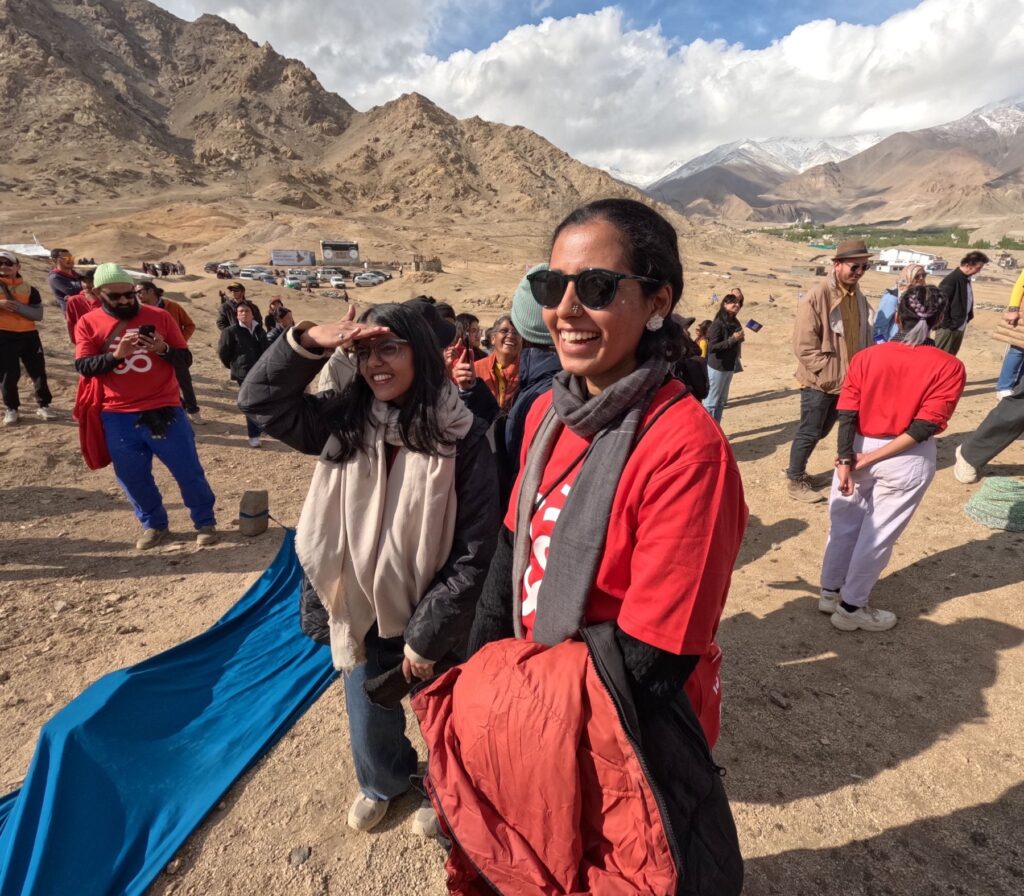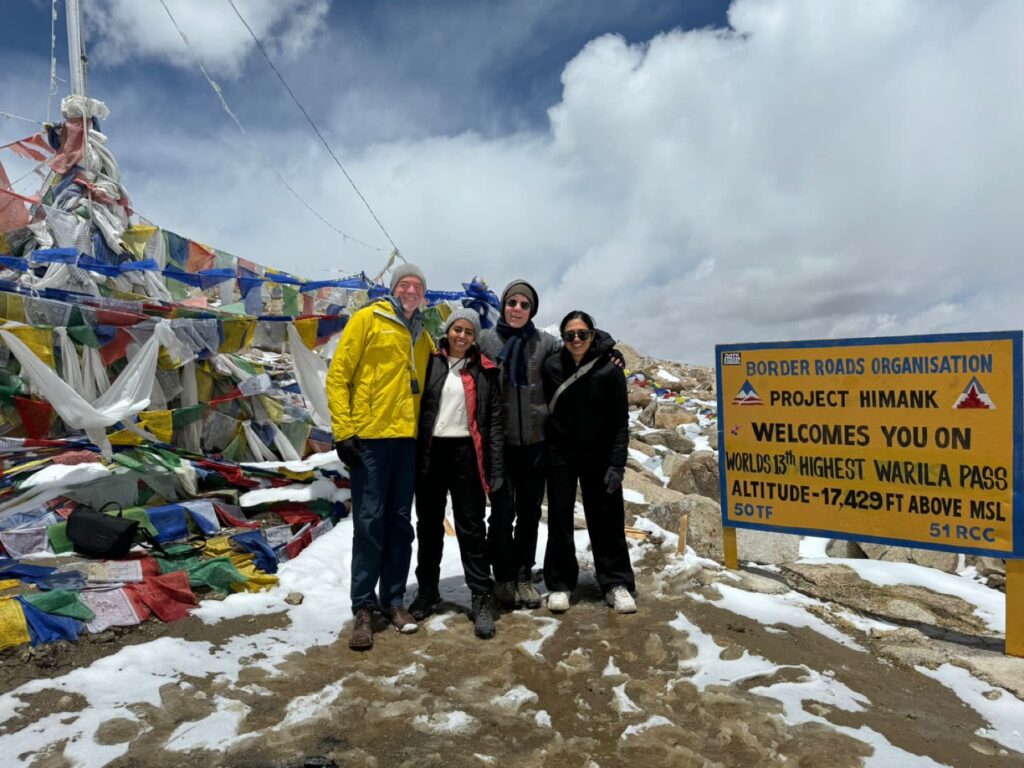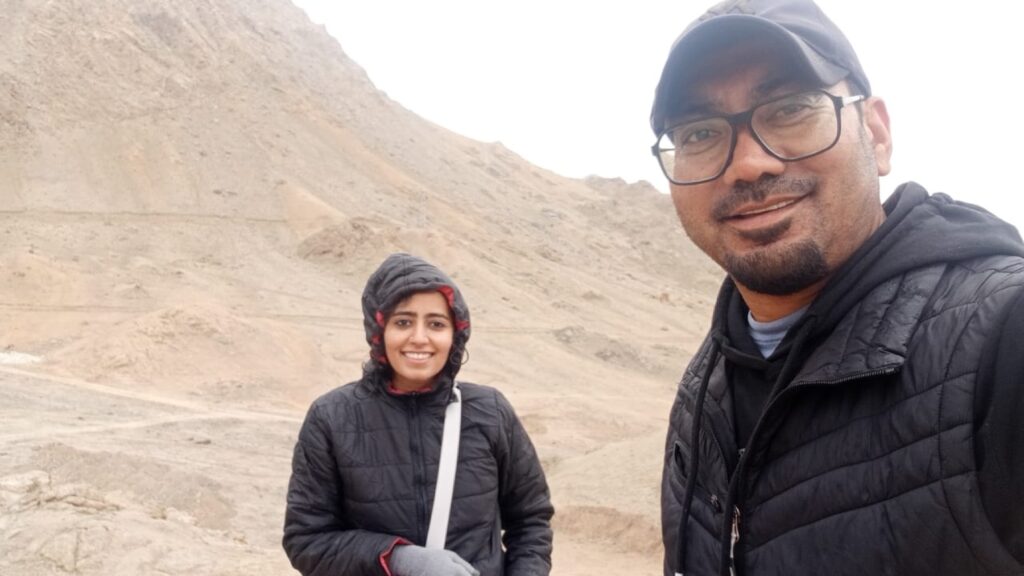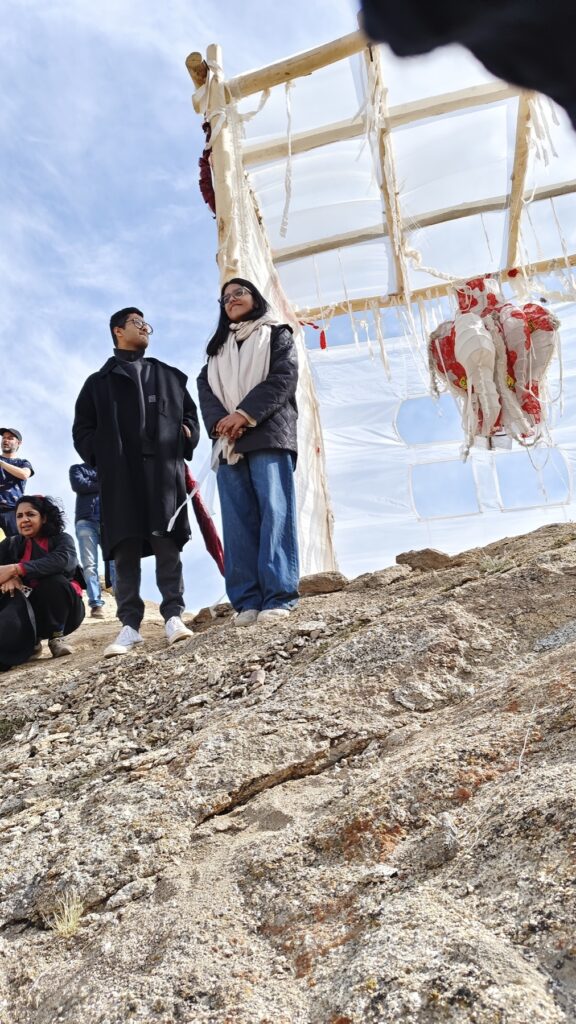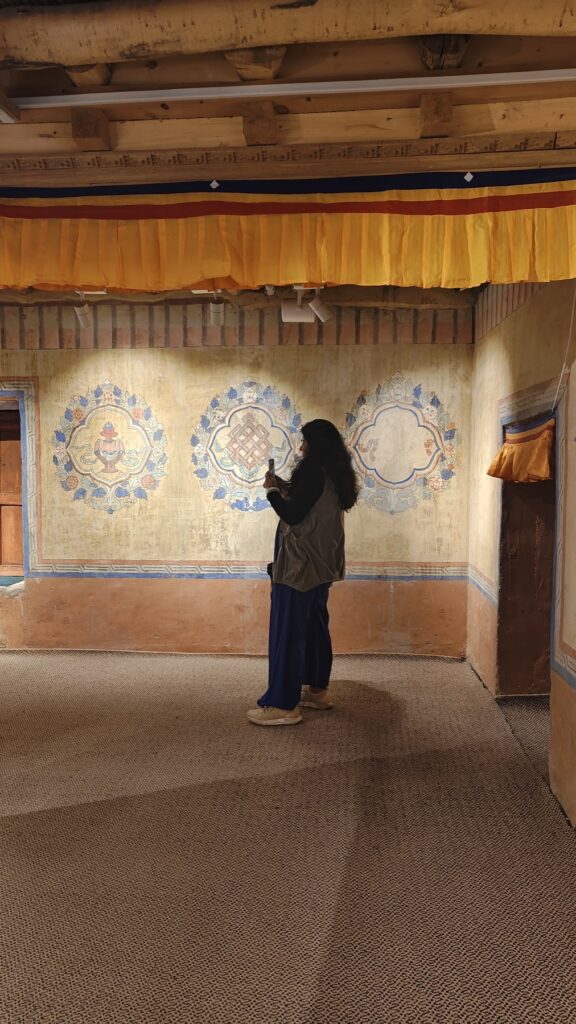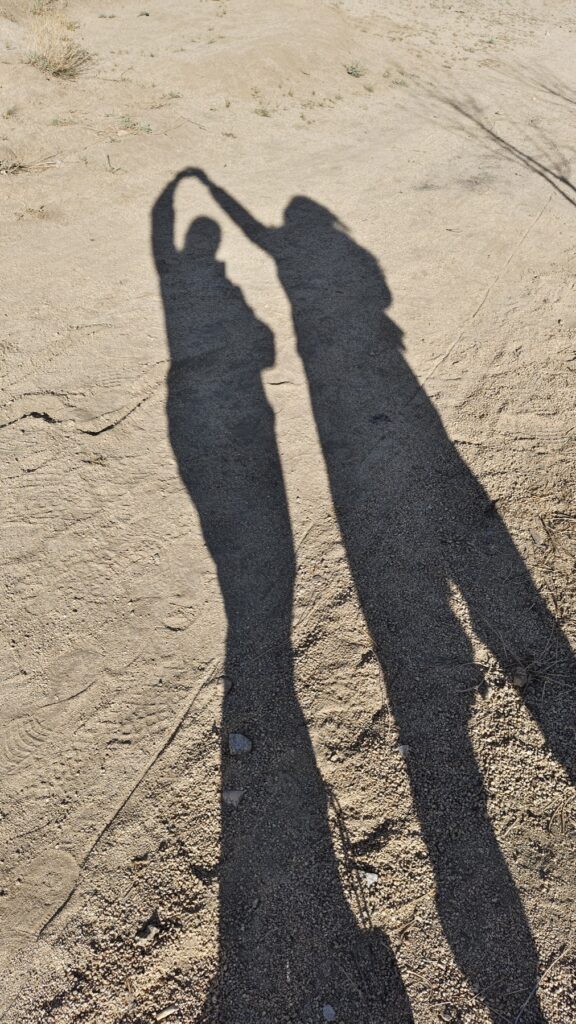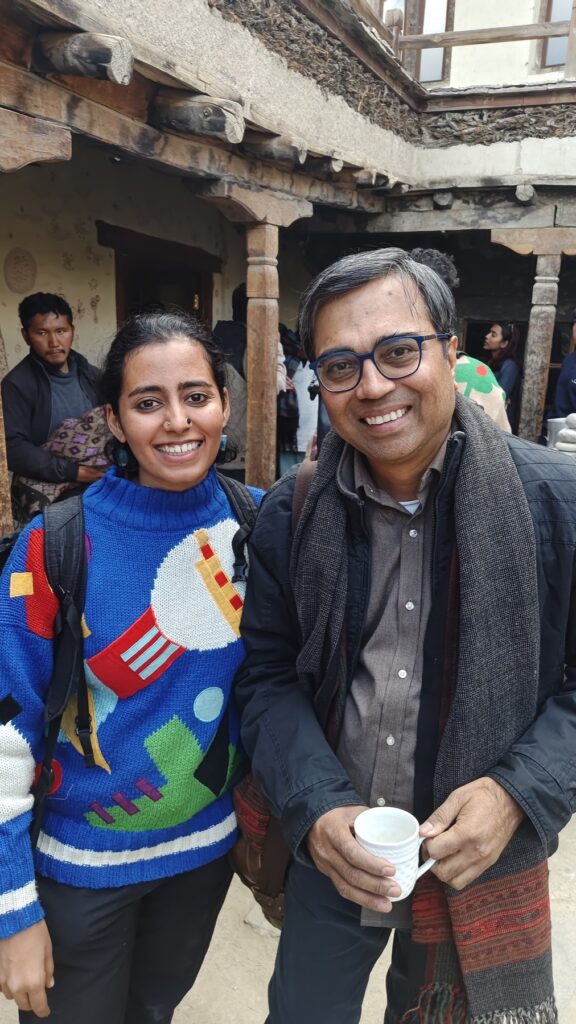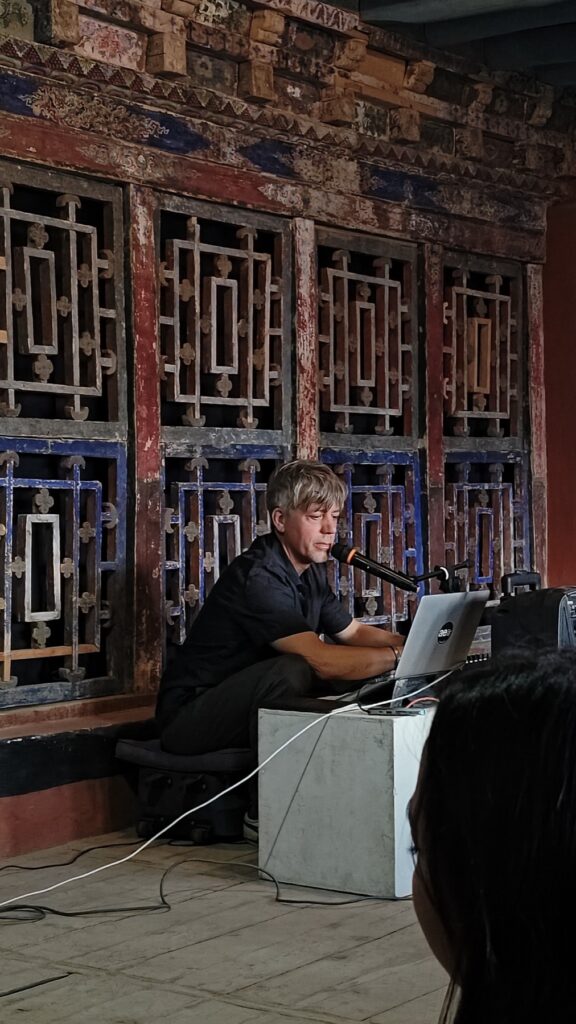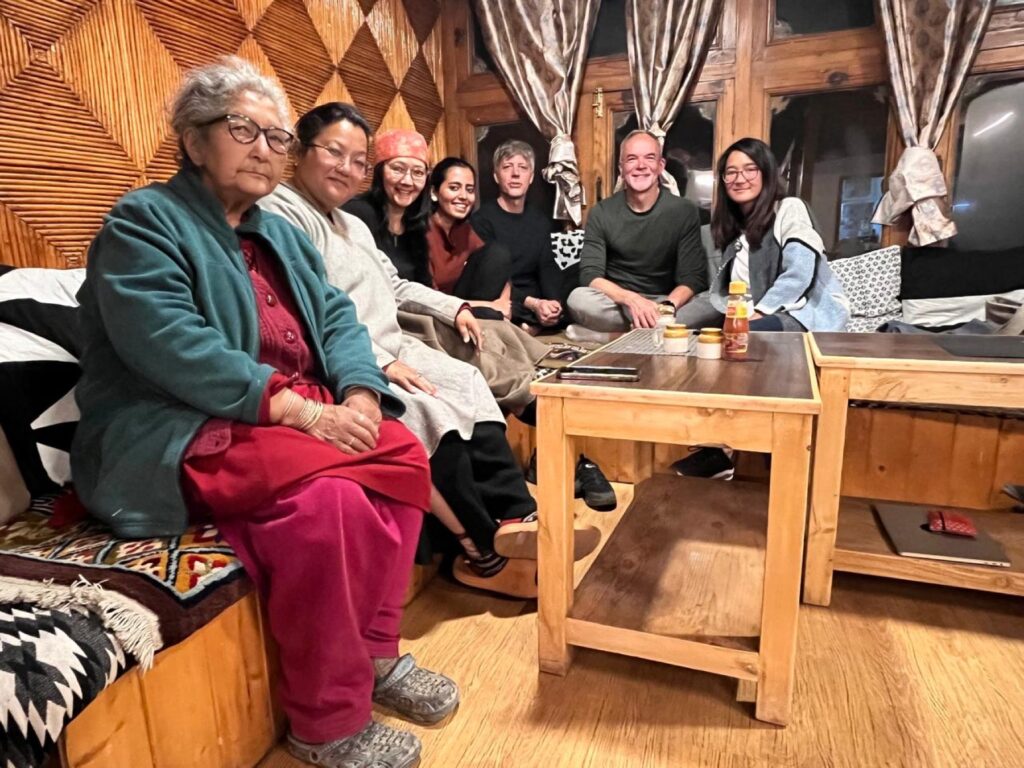When my dear friend Shreya Kanoi mentioned the Open Call for the Himalayan Knot Residency, little did I know it would lead me to the breathtaking landscapes of Ladakh. sā Ladakh is a South Asian contemporary land art group exhibition founded by Jammy, Raki, and Sagar with the idea of combining land art with environmental consciousness, all set against Ladakh’s stunning landscapes. After several rounds of interviews with the organisers, I found myself flying over the mountains to Leh for one of the most memorable experiences of my life. Raki (that’s him holding the welcome sign!) and Sagar’s warm welcome set the perfect tone. I was immediately taken by the enthusiasm in the Disko Valley Bike Park, where the show was set to take place.
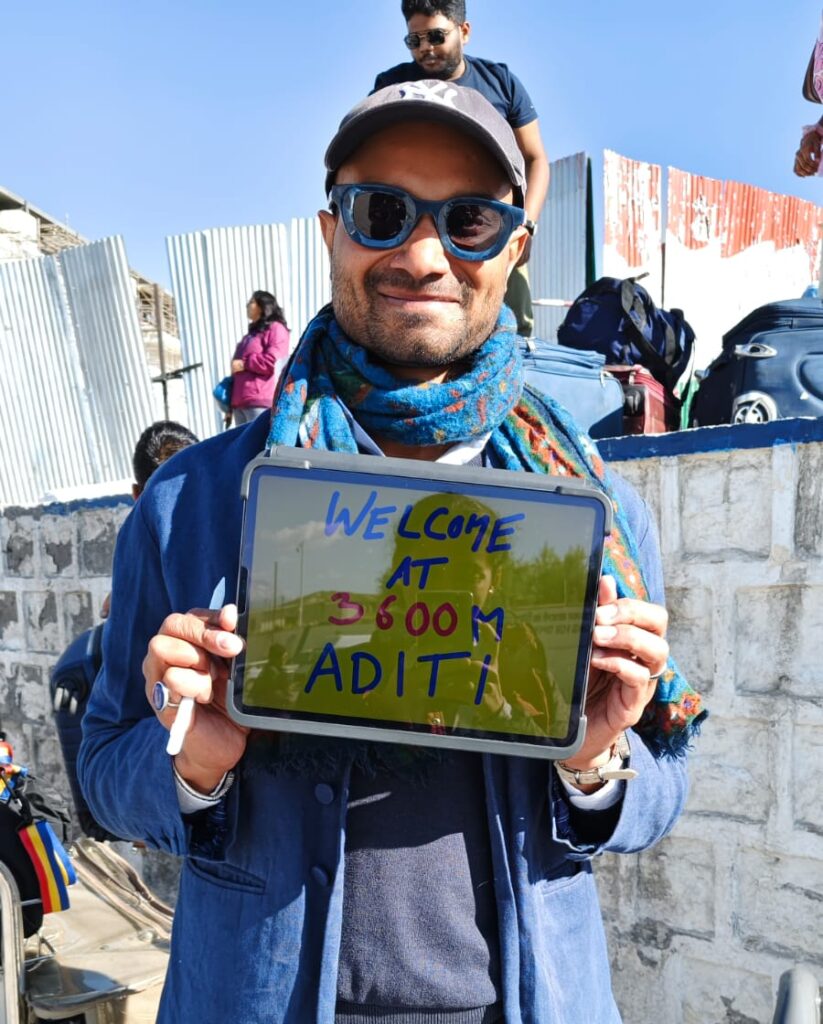
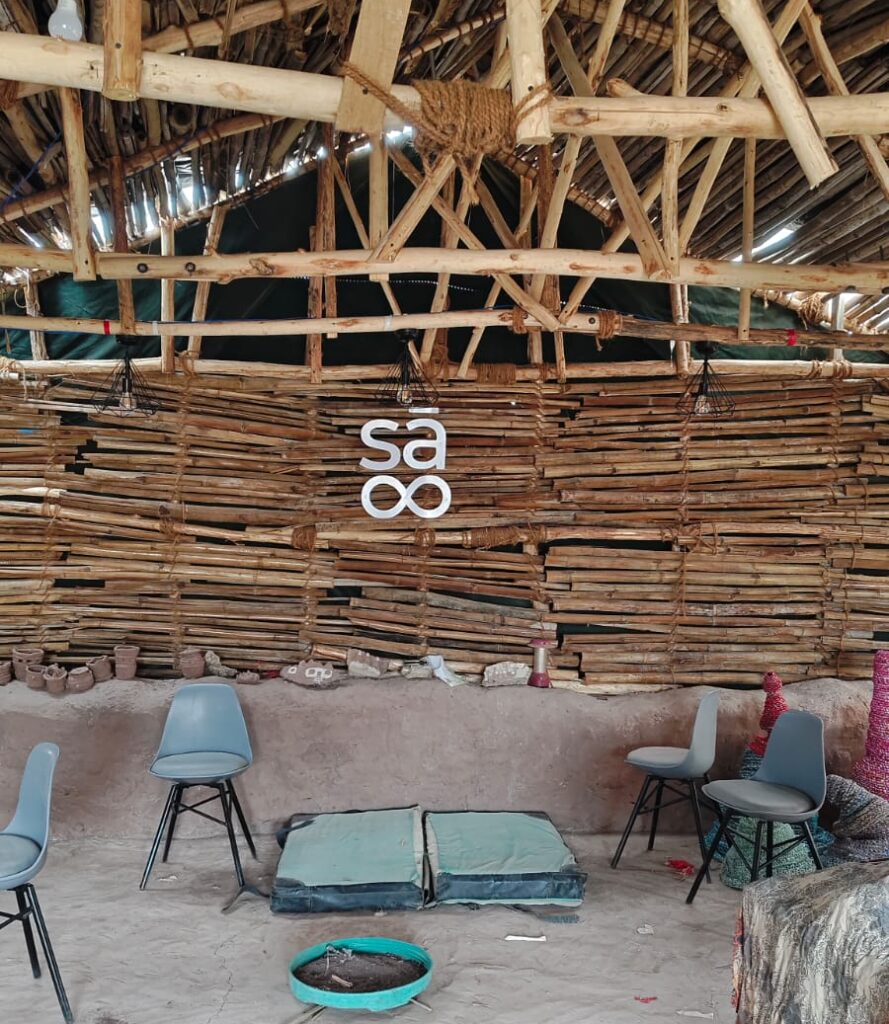
The Himalayan Knot Residency
The Himalayan Knot Residency, a Royal Enfield initiative, highlights the region’s rich textile heritage, and my work was generously sponsored by this project. While the general focus of sā Ladakh is on land art, the Himalayan Knot specifically centres on textile art. This residency was more than an artistic endeavour; it was a celebration of sustainable and mindful art, infused with the spirit of indigenous knowledge. This ethos resonated deeply with me throughout my time in Ladakh, inspiring the creation of my art pieces.
Lehvallée
Upon acclimatising, I first visited Lehvallée, a local textile brand founded by sisters Sonam and Kunzes. Their commitment to sustainable practices is evident in their use of Ladakhi fibres and traditional techniques to create unique fabrics with a European flair. All fabrics are handwoven by women and dyed with natural colours, minimising waste. During my visit to their beautiful studio in Choglamsar, I was thrilled to explore their collection of scrap fabric. I felt like being a child in a playground as I sifted through these beautiful fabrics of various textures and stunning natural dyes, all handwoven. These scraps became central to my community weaving project.
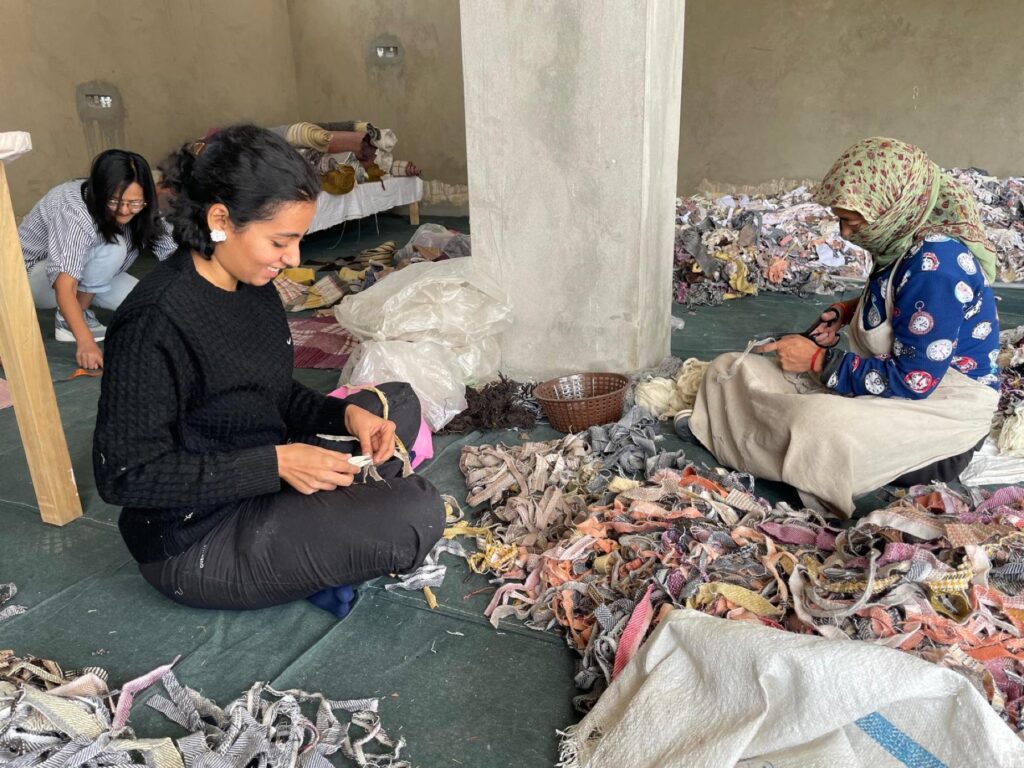
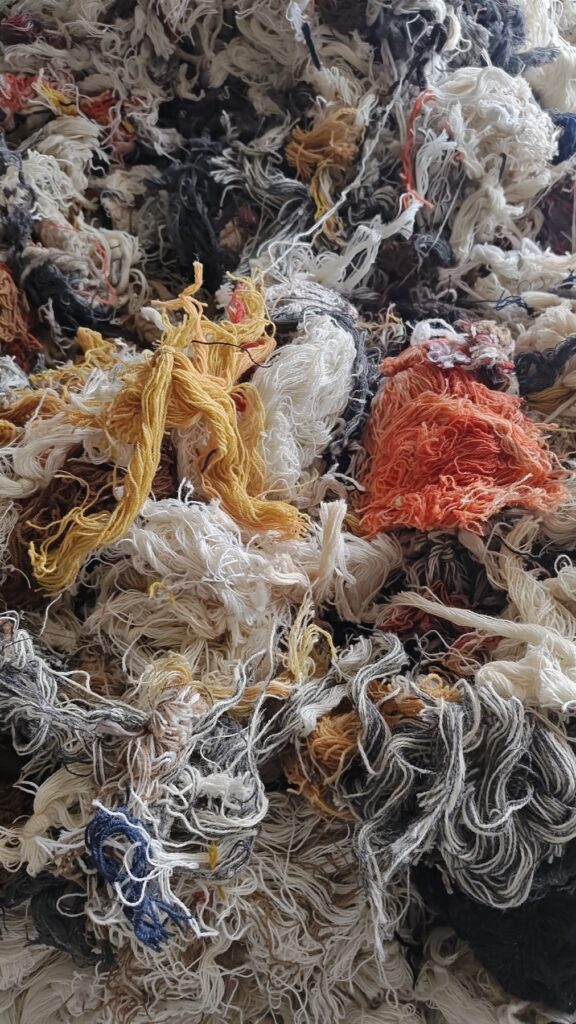
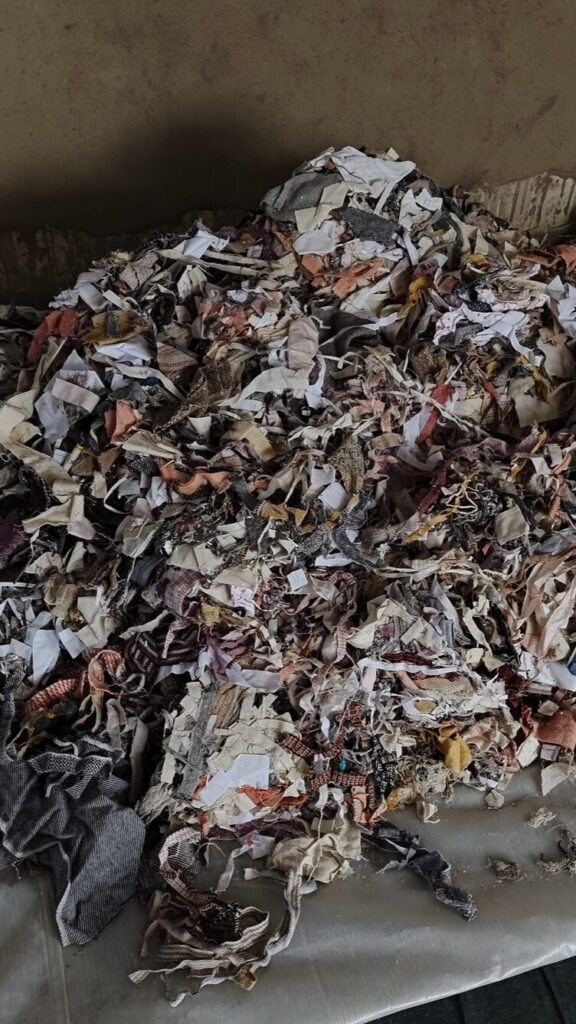
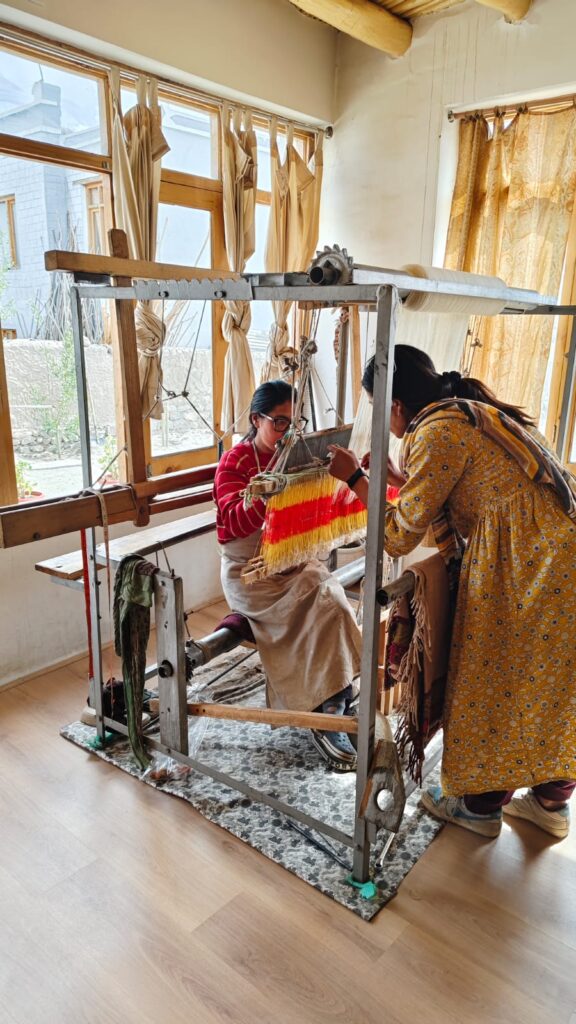
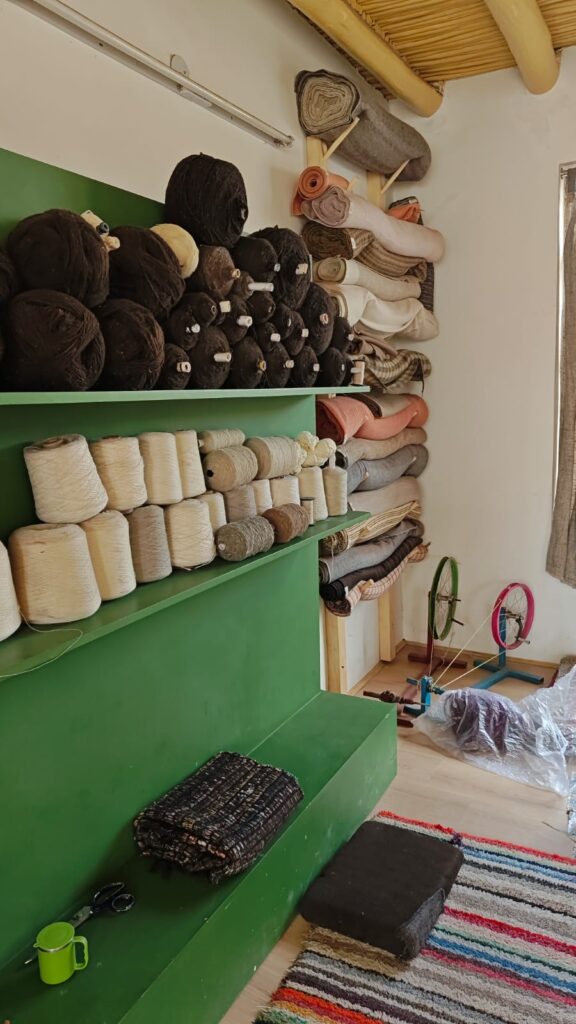
Ladakh Arts and Media Organisation (LAMO)
Before my trip, I had the privilege of virtually meeting Monisha Ahmed, a renowned anthropologist and cultural researcher dedicated to Ladakhi arts and crafts. She co-founded the Ladakh Arts and Media Organisation (LAMO), a vital institution for preserving and promoting Ladakhi culture through various mediums. Monisha generously shared her extensive research on Ladakhi textiles, which reveals how each community views the loom differently. Some say the threads represent a family, with the warp as the father, the weft as the mother, and the woven fabric as their child. Others see weaving as a spiritual practice.
Historically, some believed women shouldn’t weave. Today, women are celebrated for their incredible skill, and their fabrics travel all around the world. Inspired by these traditions, I initiated a community weaving project using scrap fabrics from Lehvallée.
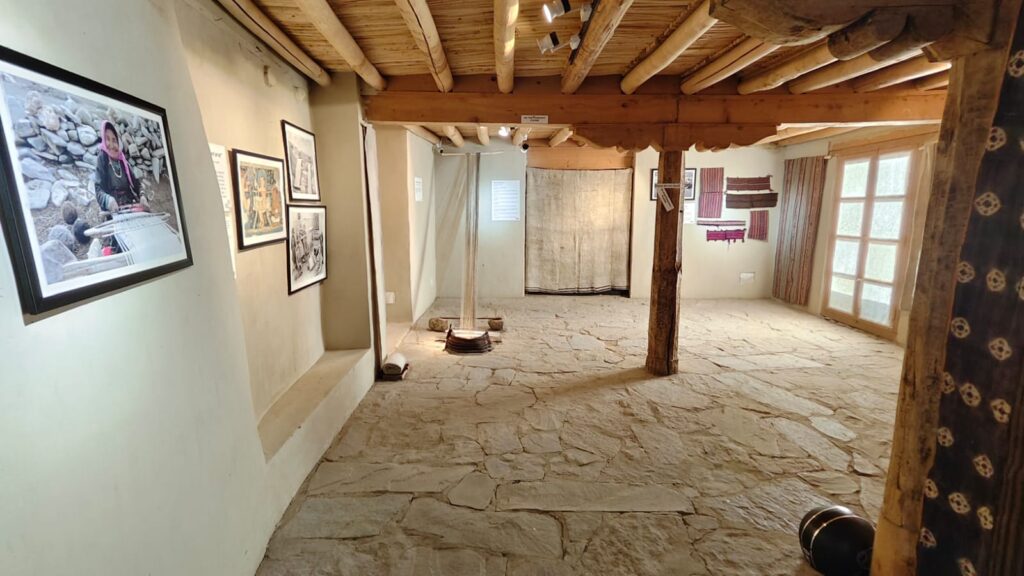
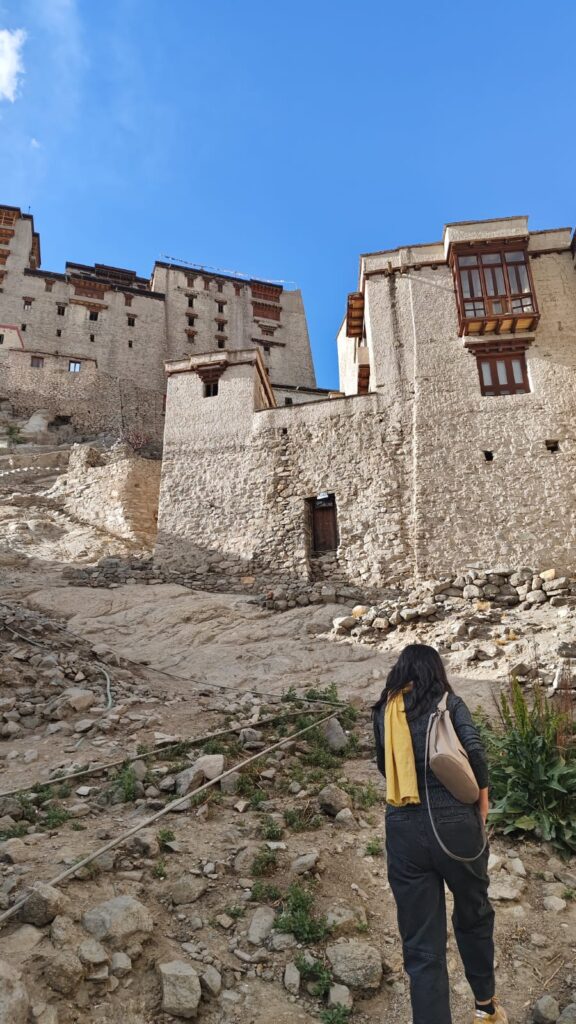
Open Weave: A Community Weaving Installation
A cluster of trees against the majestic backdrop of mountains, sky, and landscape grabbed my attention instantly. Using the trees as main posts and wooden rods, I collaborated with Lehvallée’s skilled weavers to wrap the cotton thread, mirroring their own warping techniques. All were invited to contribute to this collaborative artwork—school children, adults, and visitors alike. I put forth the question – what does the warp and weft mean to you? I invited the participants, volunteers, visitors to ponder over this question as they weave bits of the textile pieces into the installation.
The artwork, titled Open Weave, invites diverse interpretations and is a living piece that will continue to evolve as more people add their threads. Witnessing the creative expressions of school children alongside the meticulous work of adults was inspiring, was a reminder of how powerful collective art can be.
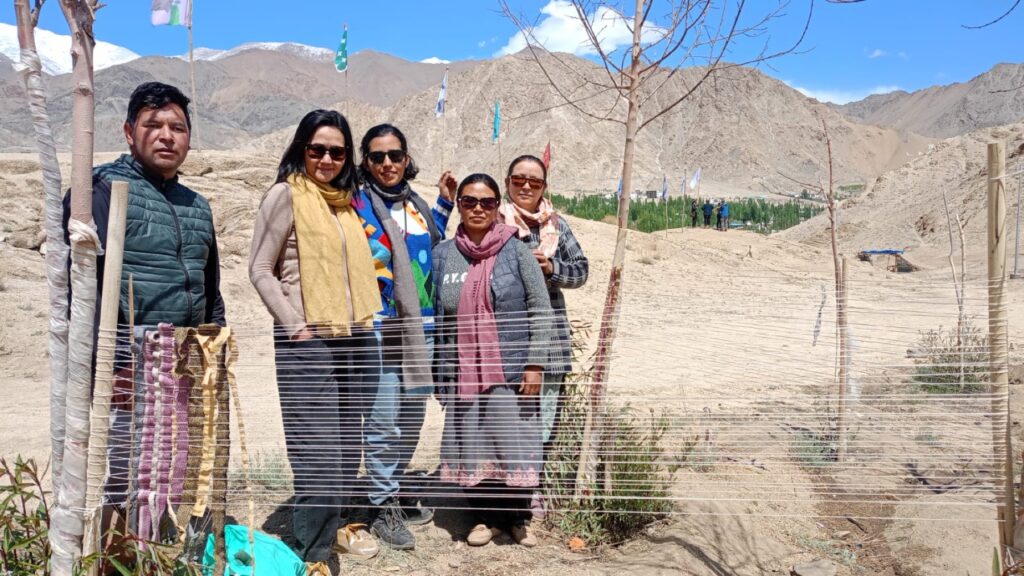
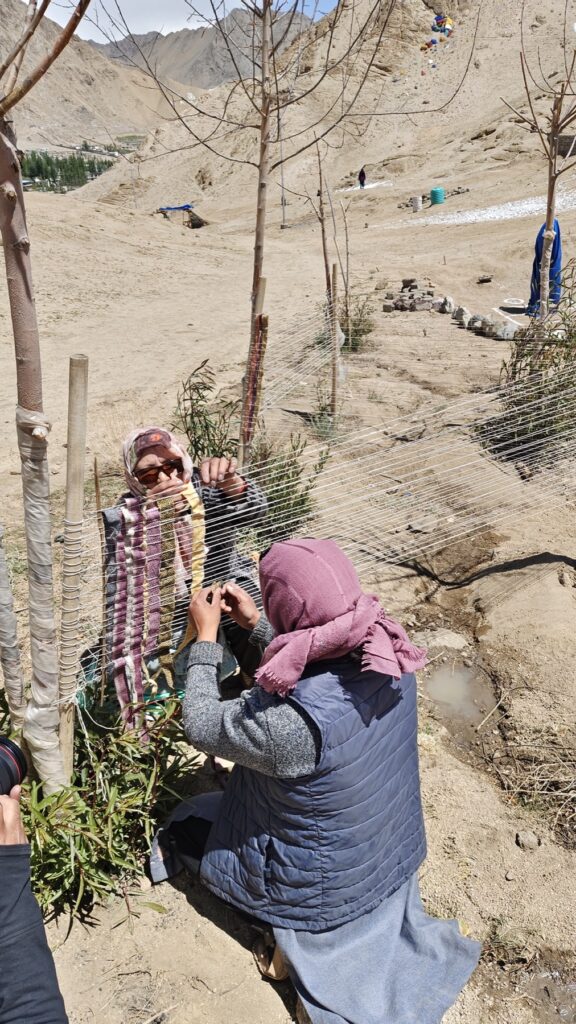
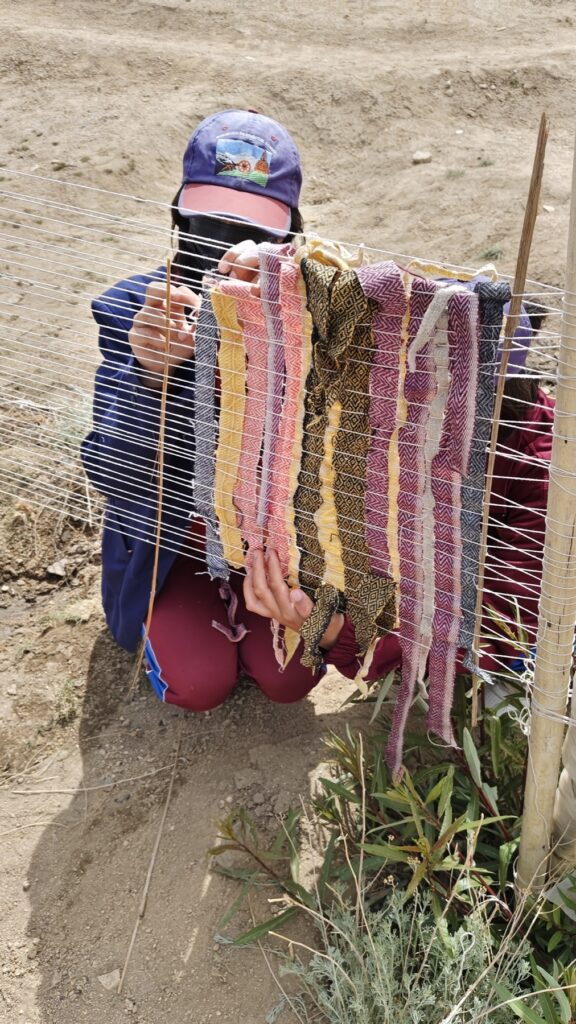
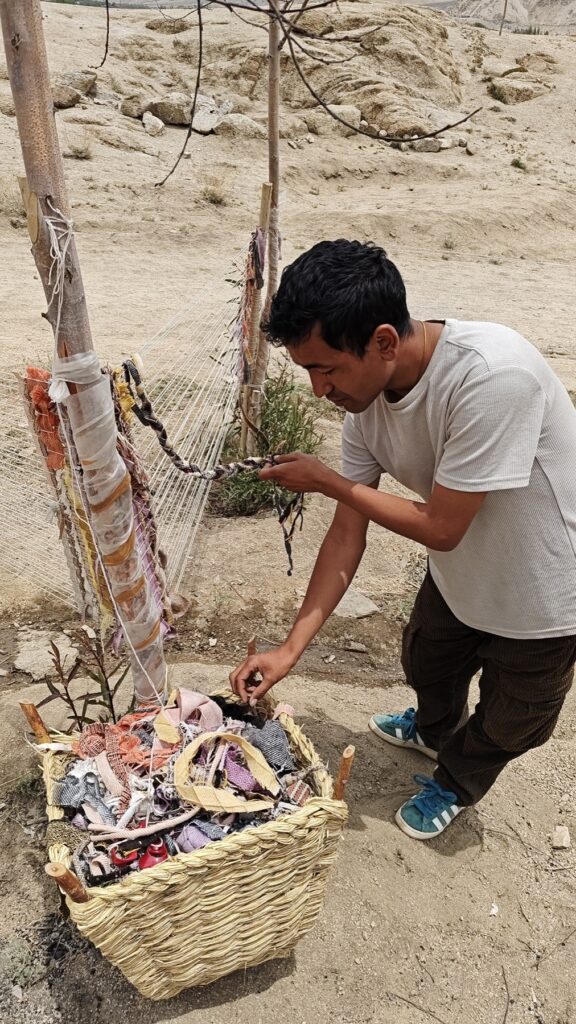
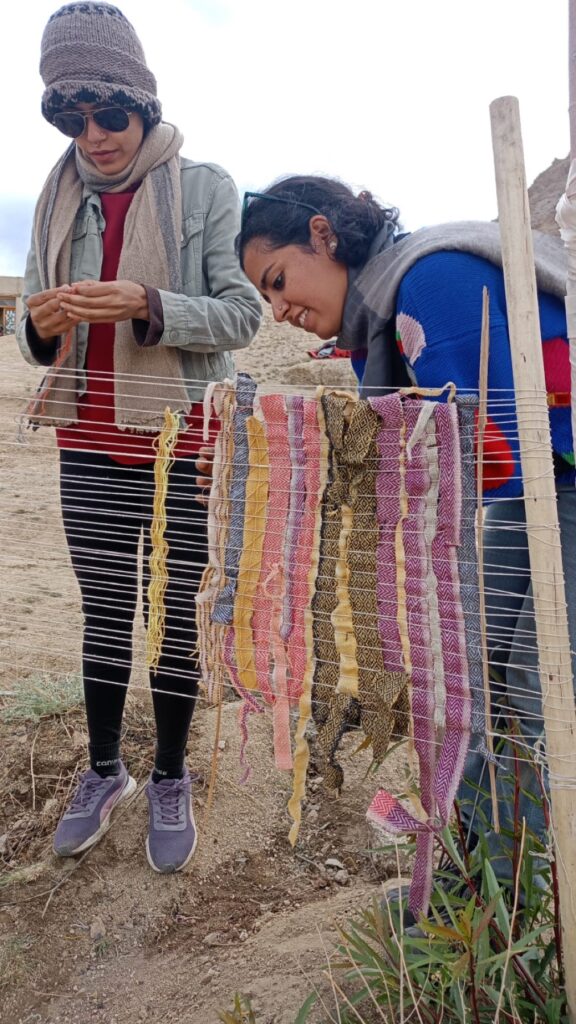
Up & Down: A Personal Journey
While the community art piece grew organically, the team from Royal Enfield encouraged me to explore my personal journey. My second piece, Up and Down, is a deeply personal exploration of my time in Ladakh. My journey to Ladakh was not just a physical adventure but also an internal exploration. I would define Ladakh in one word – textural.
The terrain—ever-changing, with mountains shifting from brown to blue to white with the play of the sun—symbolised life’s unpredictability. There are no straight lines in Ladakh; the paths wind up and down, much like life itself. In my piece, the warp represents me—the constant thread in my life. The weft embodies all the experiences I encountered in Ladakh—the unpredictable weather, the vibrant culture, and the winding paths. Together, they weave a story of my journey, enriched by every twist and turn.
I worked on this piece with Lehvallée’s weaver, Dolkar. One evening, she offered to skip her prayers at the monastery to weave with me. When I asked her why, she said, “It’s the same. Instead of praying, if I can help you, then it’s as good as praying.” Her words took me by surprise and made me wonder if spirituality is really so integrated in everyday life here?
Up and Down invites viewers to reflect on their own journeys and consider how their experiences weave into the fabric of their lives. The support from Royal Enfield’s Himalayan Knot Project was instrumental in shaping this exploration.
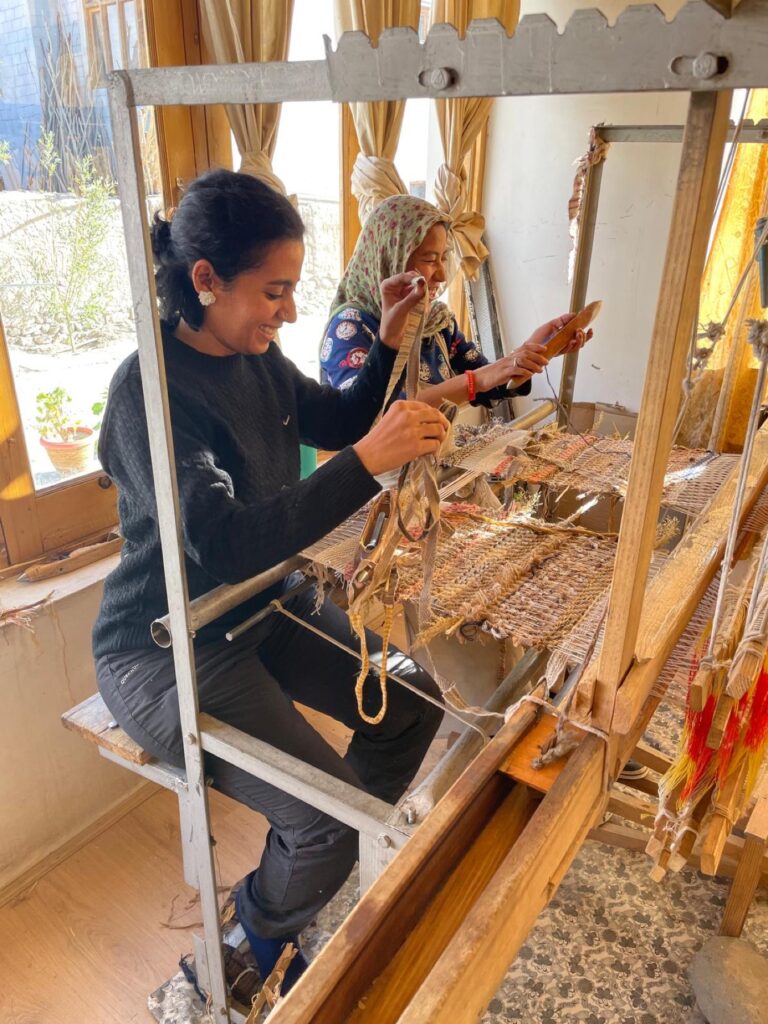
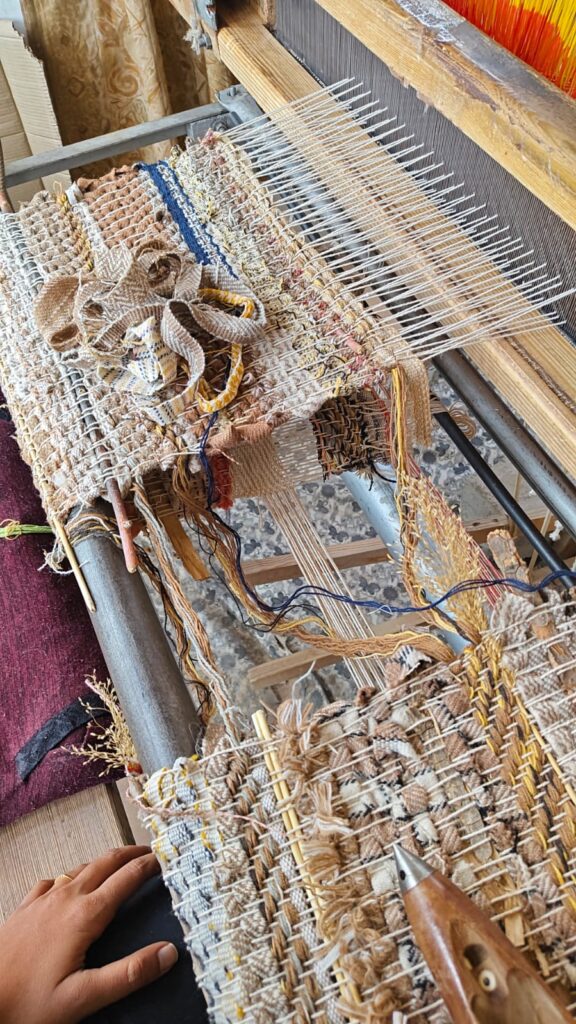
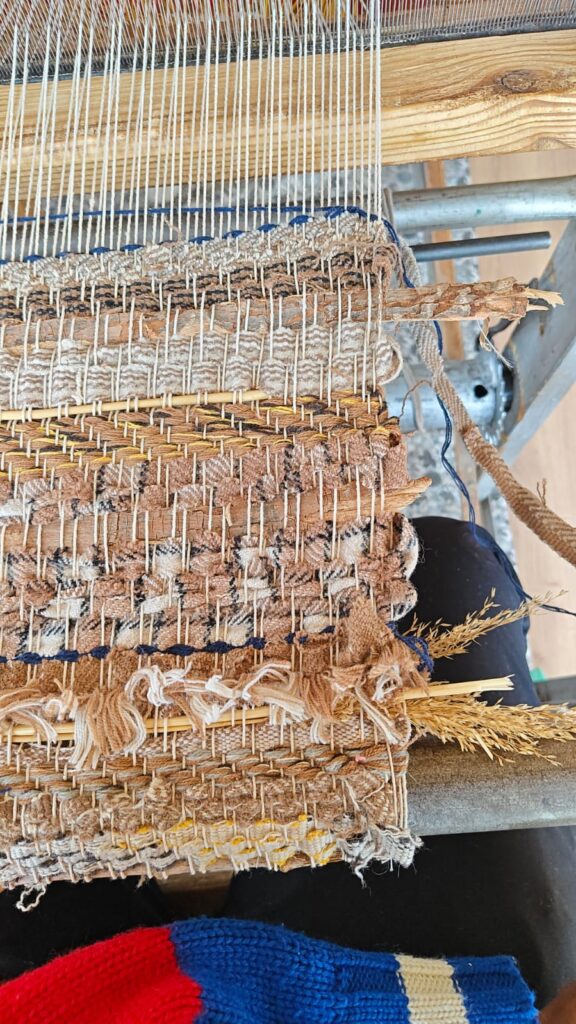

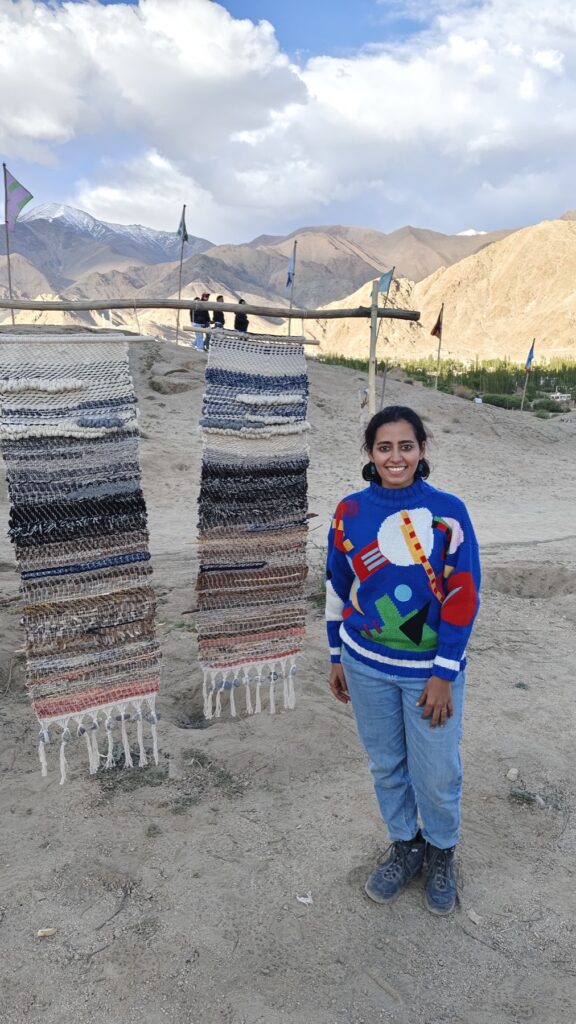
My sā Ladakh adventure was a transformative experience, shaped by the incredible people I met. The enthusiasm and energy of the volunteers were contagious. Sumita, the owner of Sangto Green Guest House, made me feel instantly at home, even allowing me to cook a meal! The sā team had an easy and welcoming vibe, which probably set the tone for the entire community. Artists, supporting members—just about everyone—were helping each other and cheering one another on. I am truly left with fun memories and lifelong friends.
This residency didn’t just introduce me to Ladakh’s culture—it gave me a new lens to see the world interconnected with art, environment, and community. I can’t wait to see where this journey takes me next.
